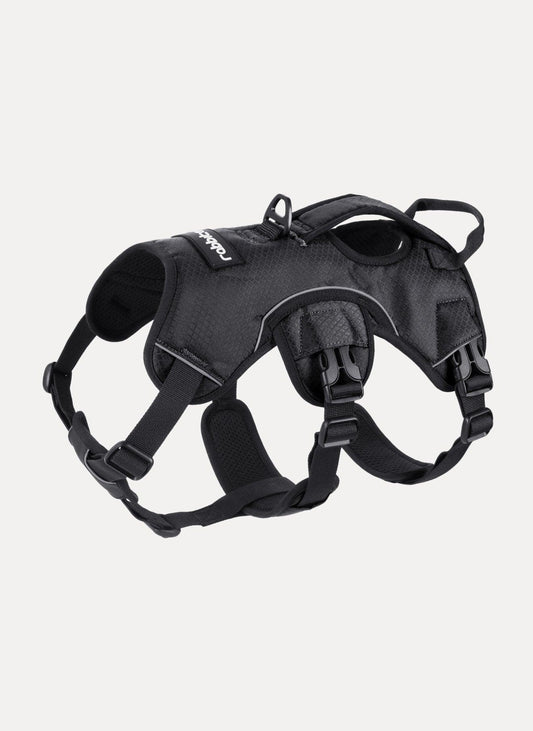How To Introduce A Cat To A Dog: Stress-Free Encounter
Are you a pet lover? Do you own both a cat and a dog? You must arrange things in a way that they both become friendly with each other.
When it comes to introducing a cat to a dog, it should always be done gradually and carefully. But if the right procedure is not followed it can take a lot of your time and effort.
The most appropriate approach is to introduce them in small proportions gradually as part of the growing routine and keenly supervised.
If you want to know the details on how to introduce a cat to a dog, stick to this article; it offers you a quick start guide that will help you initiate with the right foot forward.
How to Introduce a Cat to a Dog: 7 Key Steps
Introducing a cat to a dog requires careful attention, as it involves the well-being of both animals.
Here’s a comprehensive guide to help you navigate this process effectively.
Step 1: Creating a Safe Space for Your Cat
Before introducing the cat to the dog, ensure the cat has its safe room from the dog at all times. It should be a section of the house where the cat can go and rest without fear of intrusion by the dog or other pets.
This sanctuary could be another enclosed room that contains all the essentials of the cat’s life such as a litter box, food and water bowls, and cat beds/comfortable sleeping areas. This step is quite vital in order to enhance the safe zone for the cat so that it would not stress itself much during the introduction session.
Step 2: Building Familiarity with Scent
When introducing two or more animals, a good method is to feed them from opposite sides of a closed door. This helps the animals associate the scent of the other with the positive experience of eating, making them more comfortable with each other over time.
Start by placing their food bowls near the closed door and gradually introduce them to each other over several days. This approach helps establish positive associations and avoids direct confrontation.
Step 3: Teaching Basic Commands to Your Dog
For dogs, it is essential to teach basic commands such as "sit," "stay," and "leave it" before introducing them to the cat. These commands can help you manage the dog's behavior during the introduction process and prevent any sudden movements or aggressive behavior that might scare the cat.
Training sessions should be consistent and reward-based to ensure that the dog responds well to your commands.
Step 4: Starting Controlled Face-to-Face Meeting
Once both pets are comfortable with the scent of each other, you can begin face-to-face meetings. These initial meetings should be short and controlled. Put a harness and leash on the dog to maintain control and prevent any sudden movements. Allow the cat to approach at its own pace while keeping the dog on a leash.
Do not force any interaction; instead, let them observe each other from a distance. Positive reinforcement, like treats and praise, should be used to reward calm behavior from both animals.
Step 5: Maintaining Consistency with Daily Sessions
The daily repetition of these short, controlled meetings is crucial. Gradually increase the duration of these sessions as both pets become more comfortable. Consistency and patience are key during this phase.
Each session should end on a positive note, with both pets remaining calm and relaxed. If at any point, either pet shows signs of stress or aggression, end the session and try again later.
Step 6: Ensuring Safe Off-Leash Interaction
After several successful face-to-face meetings, you can begin to allow the pets to be loose together in the same room. This step should be supervised closely to ensure the safety of both animals.
Continue to keep the dog on a leash initially, giving the cat the freedom to explore and approach the dog as it feels comfortable. Gradually, you can let the dog off the leash, but only if you are confident in its obedience and both animals seem relaxed.
Step 7: Final Checks for Pet Safety During Play
It is even more significant to be cautious when the pets appear to be friendly, and the aggression stops. It is advised that you closely watch their togetherness until you firmly believe that you can leave them alone together.
Make sure the cat always has access to its safe space and continue to monitor the animals' behavior closely. If you notice any aggression or tension, take a step back in the introduction process and repeat the previous steps.
Note: While this guide is effective and helpful if you encounter any difficulties during the introduction process, don’t hesitate to seek professional assistance to ensure a smooth and successful transition for your pets.
The Key Takeaways
It is important for the owners of pets to consider the fact that it is not a simple task to introduce a cat to a dog and therefore the process will require a lot of time, commitment, and planning.
However, when you do get the right harness and leash for the dog it becomes much easier, safer, and more enjoyable.
In order to foster friendly interactions between the animals, this process should be followed as described above.









